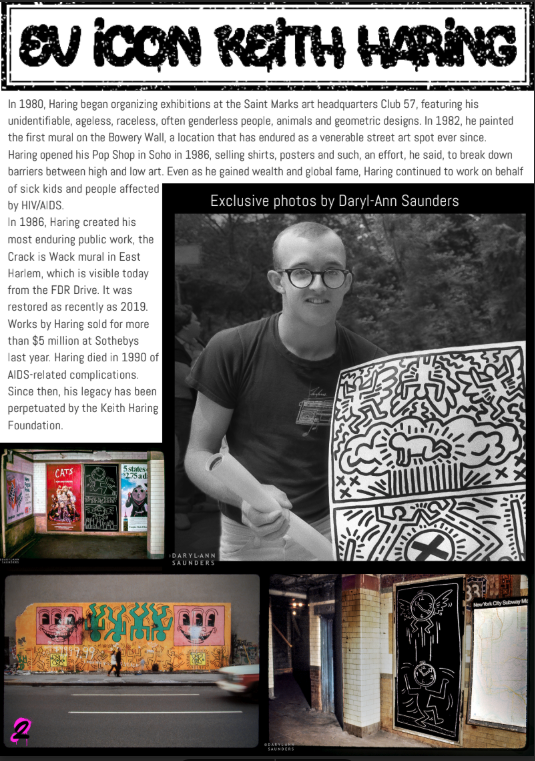Keith Haring Returns to His East Village Roots at the Brant Foundation
Keith Haring, “Untitled” (1981) copyright © Keith Haring Foundation
The Brant Foundation is bringing Keith Haring back to the East Village, where his artistic ambitions took shape more than four decades ago amid chalk dust and subway tiles. Opening March 11, 2026, this survey of Haring's early years (1980–1983) lands in the same neighborhood where a young Haring was transforming underground guerrilla art into a universal visual language.
This isn't just another Haring retrospective. Curated by Dr. Dieter Buchhart and Dr. Anna Karina Hofbauer, the show zeroes in on the period when Haring was simultaneously tagging subway platforms and ascending to gallery stardom—capturing that rare moment before street credibility calcifies into institutional acceptance.
The exhibition pulls from landmark presentations that defined downtown's 1980s fusion of club culture and contemporary art. Centerpiece works include pieces from Haring's 1982 Tony Shafrazi Gallery show, where he transformed the basement into the legendary Blacklight Room—a fluorescent DayGlo installation bathed in UV light that erased the boundary between art space and dance floor.
Also featured: selections from Haring's 1983 show at FUN Gallery, the scrappy Lower East Side space just a few blocks away on East 10th Street where neighborhood kids, b-boys, downtown artists, and uptown collectors collided. FUN Gallery was ground zero for the street-to-gallery movement, championing Haring alongside Kenny Scharf, Futura, Fab 5 Freddy, and Jean-Michel Basquiat.
Remember the print version of B Scene Zine? Here’s a page from Volume 1, Issue 5, March 2022, featuring Keith Haring and exclusive earkt photographs of Haring by Daryl-Ann Saunders.
"Like a positive humanist virus, Haring's urban guerrilla art lives on in our collective memory, fighting against ignorance, fear, and silence," Buchhart said. "His humanist code resonates with a universality that transcends time and place. And in the spirit of today's Emoji euphoria, we might well proclaim: For better or worse, we are all speaking Haring now."
The show tracks Haring's visual vocabulary as it crystallized in real time: radiant babies, barking dogs vibrating with kinetic energy, and proto-emojis decades before digital culture caught up. His 1981 untitled work featuring a pink smiling face in baked enamel on metal reads like prophecy—a universal communication system before smartphones existed. Another 1981 piece showcases his trademark dogs, surrounded by those signature energetic lines that seem to pulse off the canvas. And a 1982 untitled work depicting a psychedelic Mickey Mouse demonstrates Haring's subversive appropriation of distinctly American pop imagery—a move he shared with contemporaries Basquiat, Scharf, and Warhol.
The Brant Foundation's East Village space at 421 East 6th Street—a former ConEd substation that later served as Walter De Maria's home and studio—has positioned itself as the keeper of downtown's 80s legacy. Following major surveys of Basquiat (2019), Warhol (2023), and Kenny Scharf (2024), the foundation is methodically documenting that pivotal era when street art crashed the establishment and rewrote contemporary art's rule book.
Haring remains the quintessential downtown artist who refused to stay downtown. He used his art to champion urgent causes—particularly the AIDS crisis that would eventually claim his life in 1990—while maintaining the raw energy and accessibility that first made him notorious in the subways. This exhibition captures him at the inflection point, still carrying the rebellious spirit of street art while beginning his trajectory toward international fame.
Peter M. Brant, the foundation's founder, emphasizes the ongoing relevance: "Haring was a champion for important causes of his time, particularly the AIDS crisis. He used his art to support his tireless activism and advocate for change, inspiring millions with his distinct style."
Keith Haring opens March 11, 2026, at The Brant Foundation, 421 East 6th Street, East Village.


